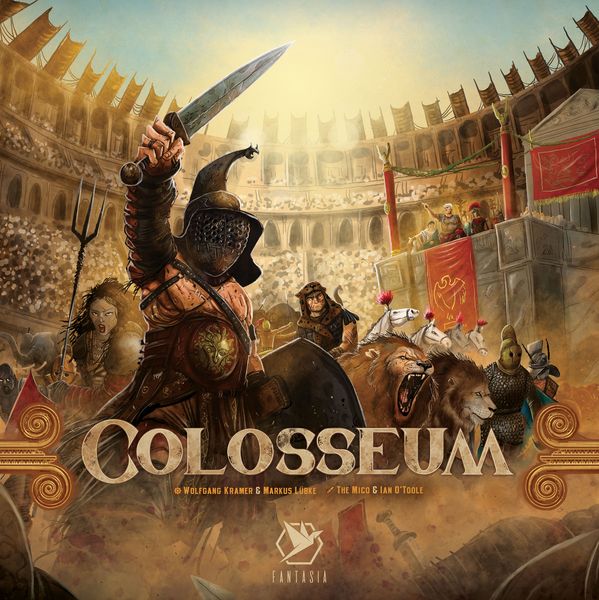Colosseum (2007) Board Game
Colosseum is a board game that was released in 2007, designed by Cyrille Daujean, Jacqui Davis, Julien Delval, and Mihajlo Dimitrievski. The game is set in ancient Rome and revolves around players managing their own colosseum and putting on grand spectacles for the public.
Game Components of Colosseum
How To Setup Colosseum
Each player starts by taking a colosseum and placing it on the board. They receive a starting supply of 30 coins and 5-8 random asset tokens. The six nobles are placed at their starting positions, and the five marketplaces are filled with lots of three assets each. One player is chosen as the first player, a role that rotates throughout the game.
Gameplay Mechanics and Game Objective
Gameplay Phases
Game Objective
The objective is to attract the most spectators to your events over five rounds, with the highest single-event spectator count determining the final score.
Player Experience
Colosseum offers a dynamic experience with multiple paths to victory, emphasizing forward planning and resource management. Players must balance investing in their arena, acquiring the right assets, and strategically timing their events to maximize spectator numbers.
Pros
Cons
Personal Thoughts on Colosseum
Colosseum is ideal for players who enjoy strategic games with a blend of auctioning, trading, and resource management. It is suited for those who appreciate games that require planning ahead and adapting to changing circumstances. While it may not be the best fit for casual gamers due to its complexity, experienced players will find it engaging and challenging.
We are supported by our audience. When you purchase through links on our site, we may earn an affiliate commission, at no extra cost for you. Learn more.

